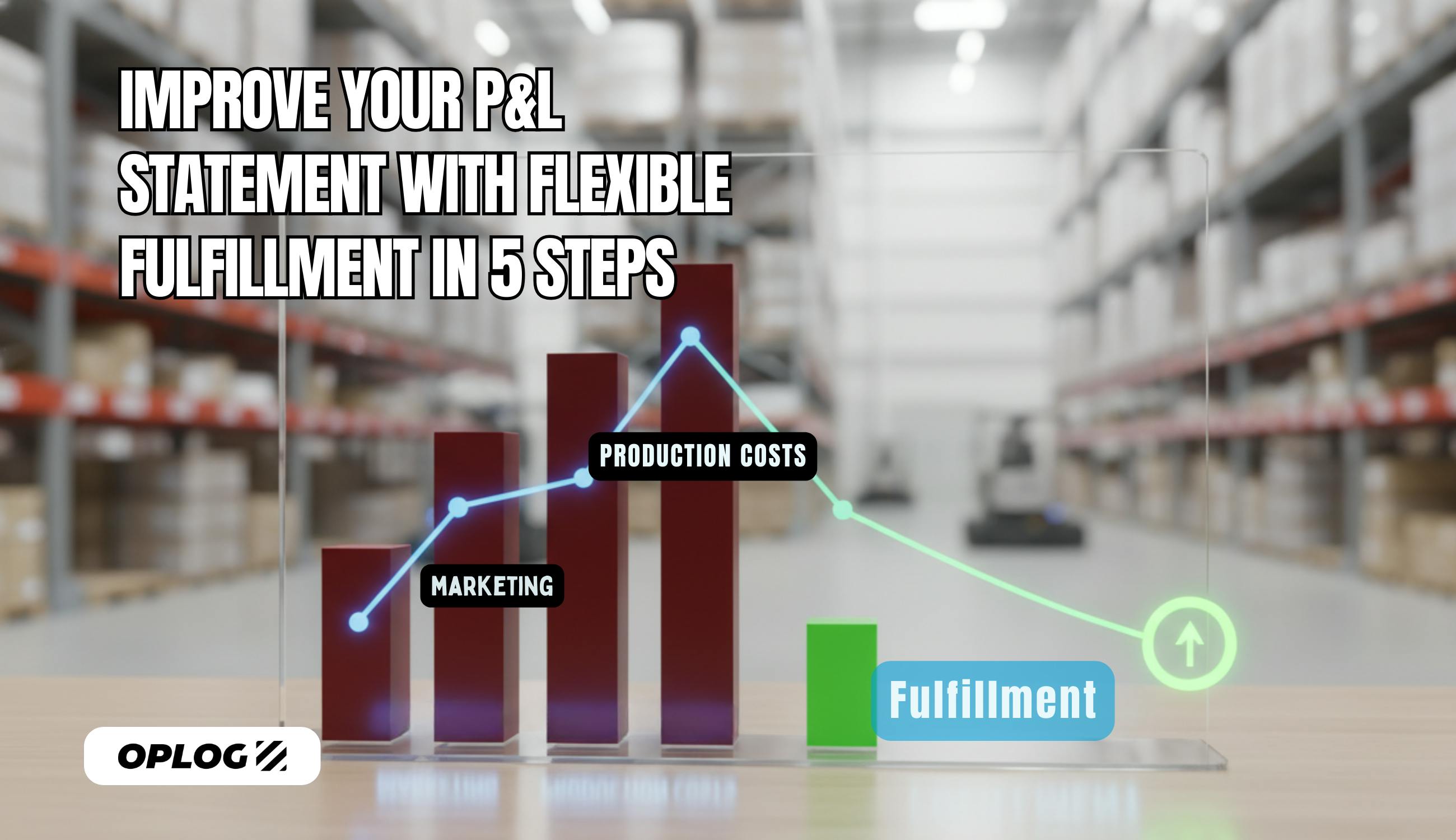Logistics is not just about moving boxes; it is about moving the world. But sometimes, the world can be a bit too heavy, too fast, or too complicated for retail brands to handle.
Navigating the logistics challenges could be like finding your way through a maze of supply chain puzzles. From inventory management to order fulfillment and delivery, navigating this maze requires proactive strategies and innovative solutions in today’s highly competitive and ever-changing market.
To ensure you deliver exceptional customer service and grow your revenue profits, we will discuss the 5 logistics challenges and how to solve them.
- Meeting customer needs
- Inventory visibility
- Supply Chain Complexity
- Order Fulfillment and Distribution
- Demand for Omnichannel
Challenge: Meeting Customer’s Expectations
The main objective of any retailer is to satisfy their customers' desires. However, it becomes challenging when the customers' desires keep changing.
Your customers expect to receive their orders quickly, and they often want the option to choose their delivery method. This can strain your logistics networks, as you will need to find ways to deliver orders quickly and efficiently without sacrificing cost.
Companies like Amazon have set the bar high with same-day deliveries, compelling retailers, and brands to match their delivery promise or provide a differentiated appealing value to customers.
51% of retailers offer same-day delivery, and 65% plan to offer it within two years. 49% of shoppers say that same-day delivery makes them more likely to shop online.
Merely promising timely delivery is not enough to satisfy your customers. They require more than just fast and free shipping; convenience is also critical.
Solution
To handle fast, affordable delivery, you need a flexible warehousing and fulfillment solution that makes it simple to build out a network to create compelling delivery promises.
Having warehouses and fulfillment centers close to your customers allows you to save on transportation costs and the ability to do so while meeting customers' delivery expectations.
You can also outsource your logistics operations to experts by partnering with third-party logistics (3PL) providers. This can free up time for your business to focus on other goals and help improve logistics performance.
Speed up your delivery processes and meet customers' expectations when you partner with 3pl provider as OPLOG. We seamlessly manage all your sales channels, boosting sales and maximizing product distribution.
Another thing is to make your products available through various purchasing channels such as in-store, online, social media, and third-party retailers. The experience must be seamless and convenient across every channel, from the store to the website to delivery.
Challenge: Inventory visibility
According to a survey of corporate retail professionals conducted by Wakefield Research and Bossa Nova Robotics, 73% of respondents consider inaccurate forecasting “a constant issue” for their store. It also found that 87% of respondents consider inaccurate inventory a more prominent factor in revenue loss than theft.
Inventory visibility is a critical aspect of logistics for your brand, as it is the ability to track inventory levels in real time across all channels, including stores, warehouses, and third-party logistics providers.
Without accurate inventory visibility, you run the risk of out-of-stock items, overstocked items, delayed shipments, and poor service delivery.
Solution
One primary reason for poor forecasting is the lack of a Warehouse Management System (WMS) that provides the fundamental technology needed to give retailers and brands a holistic view of their inventory and order data.
With the help of our advanced WMS, you can easily manage your inventory and keep track of stock levels, movements, and storage across multiple warehouses.
Get real-time data on inventory levels and stock movements with OPLOG One. Keep track of stock, optimize space utilization, and reduce operational costs. Let’s get you started!
Challenge: Supply Chain Complexity
Supply chain complexity often occurs due to variability, uncertainty, and interdependence in the supply chain, which affects performance and efficiency.
This complexity often presents logistical challenges for retail brands, as it may:
Increase costs and risks: A complex supply chain may involve more suppliers, distributors, channels, products, and customers, increasing operational and transactional costs and risks. For example, a complex supply chain may require more inventory, transportation, coordination, and quality control costs. It may also expose the supply chain to disruptions, fluctuations, errors, or fraud.
Reduce visibility and control: A complex supply chain may have less standardization, integration, and collaboration among its partners, reducing visibility and control over the inventory and processes. For example, a complex supply chain may have different systems, formats, and protocols for managing inventory data across various locations and channels.
Overall, these challenges lead to poor customer satisfaction and revenue loss.
Solution
Simplifying the supply chain: You can streamline your supply chain by minimizing the number of vendors and distributors you work with.
Using technology and data: Use technology to improve visibility and control over the supply chain process. Cloud-based platforms offer a central management system where you can see the movement of inventory across different vendors/partners for informed decision making.
For example, OPLOG One provides users with inventory metrics that help businesses understand vendors performing and those that are not.
Expand your network: One way to reduce uncertainties in your supply chain is to establish a network of suppliers and distributors. For instance, if you acquire materials from China, India, and Vietnam, and your Chinese supplier experiences a production halt, you can still rely on the other two sourcing options.
In 2017, Nike experienced a supply chain disruption when a fire broke out at one of its suppliers' factories in Bangladesh. The fire destroyed millions of dollars' worth of shoes, leading to shipment delays and shortages of popular products.
Challenge: Order Fulfillment and Distribution
It is essential to have a streamlined order fulfillment and distribution process to meet customers' expectations.
However, with the advent of e-commerce, the complexity of these processes has increased significantly. Customers now expect quicker delivery times and more flexible shipping options.
A study by the National Retail Federation found that 60% of online shoppers have abandoned a purchase because of shipping delays. Another study by Forrester Research found that 86% of online shoppers say that shipping speed is important to them.
It cannot be overstated how crucial it is to have an efficient order fulfillment process.
Solution
You can leverage technology-driven solutions such as warehouse management systems (WMS) and transportation management systems (TMS) to address this challenge.
These systems enable you to optimize warehouse operations, improve order accuracy, and streamline the shipping process.
Additionally, implementing a robust last-mile delivery strategy, including partnerships with third-party logistics providers or local fulfillment centers, can enhance delivery speed and customer satisfaction.
With OPLOG fulfillment, you can effectively manage inventory, track orders, and monitor warehouse operations, allowing you to focus on strategic growth while reducing costs associated with staffing and equipment.
Challenge: Demand for Omnichannel Experience
The lack of an integrated omnichannel strategy poses significant challenges for brands striving to stay ahead in an increasingly crowded retail marketplace.
There is a growing need for businesses to offer flexibility in how they interact with their vendors/customers. Whether it's through a website, mobile app, or physical store, vendors/customers want to communicate through their preferred channels. And this applies to B2C/B2B interactions.
How do you track all dynamic paths of fulfillment—especially when managing a global supply chain?
Solution
To optimize your retail business, it is essential to have an effective omnichannel strategy that meets the needs of B2B and B2C operations, providing a flexible and scalable approach to order fulfillment.
By simply integrating multiple channels, such as online marketplaces, e-commerce websites, and physical stores, you can offer a seamless and consistent sales experience across all touchpoints.
Omnichannel incorporates various components, such as order management systems, distribution centers, order fulfillment processes, transportation systems, and reverse logistics for your B2B/B2C operations.
The solution allows you to manage sales from different channels within a single platform. This means you can create a comprehensive retail experience for customers regardless of their preferred channel of interaction.
With OPLOG's Omnichannel Fulfillment, you get the best of both worlds. We integrate all the necessary technology and resources to ensure smooth B2B and B2C operations - so say goodbye to complexities and hello to streamlined efficiency with OPLOG today.
Last thoughts
Retail brands encounter complex and constantly evolving logistics obstacles. Nonetheless, you can overcome these challenges by adopting efficient tactics and solutions and optimizing your operations to thrive in the fiercely competitive industry.






